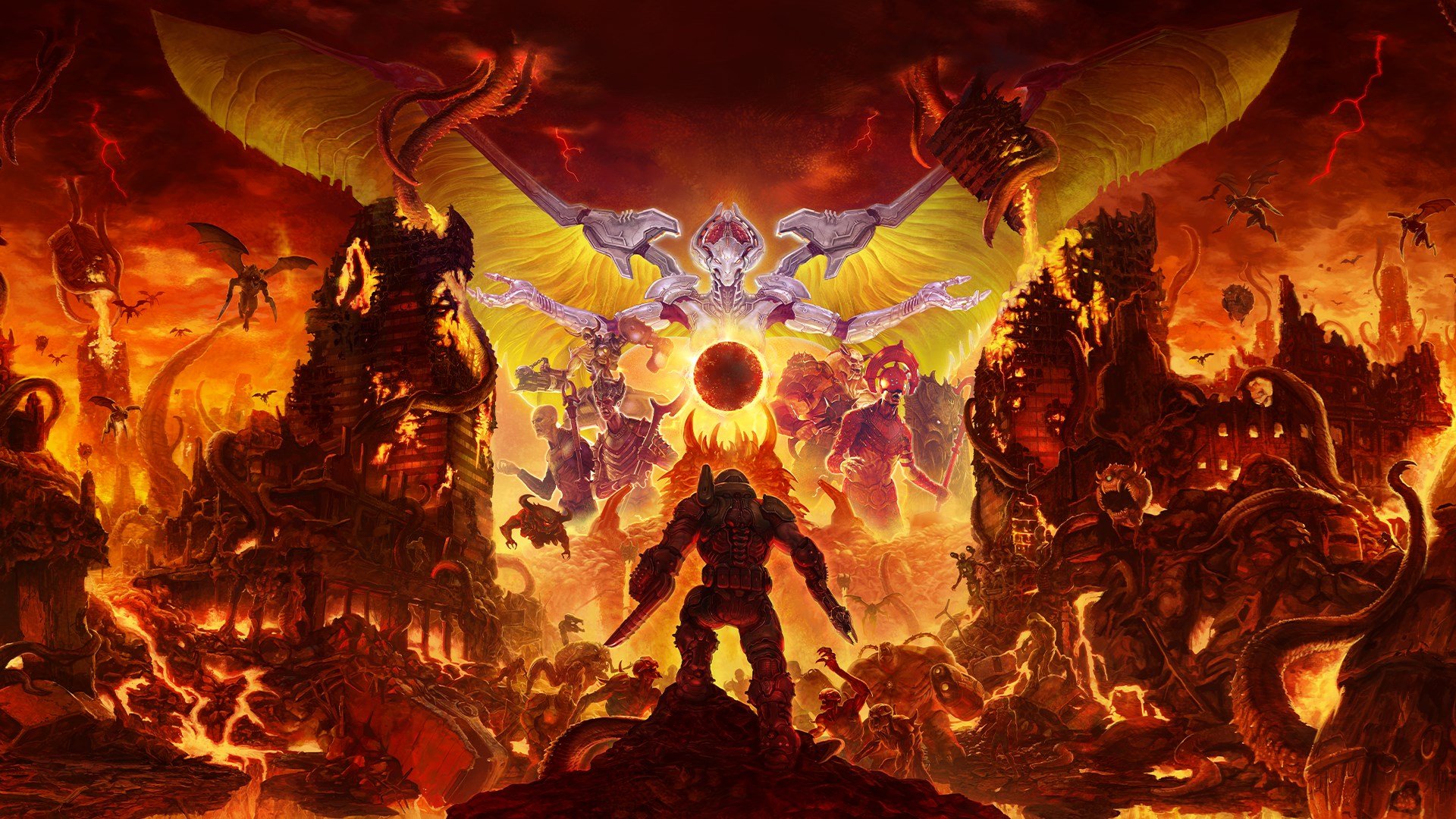The Doom franchise started something of a movement in the gaming industry. Improving upon what made Wolfenstein 3D popular, Doom took things to a whole new level. Quick sequels further cemented its place as the best FPS shooter of the time.
More than 21 years later, we’ve seen a franchise that had its ups and downs but always seems to find a new gear and improve upon old formulas. At this point, we don’t know exactly what we’ll be getting in Doom: The Dark Ages, but we’ll sure be there to find out.
Without further ado, here’s our ultimate list of the best Doom games, ranked from worst to best.
The top Doom games ranked from worst to best
| Rank | Game | Original Release | Highlights |
| 10 | Sigil | 2019 | – John Romero level design – True Doom II experience |
| 9 | Doom | 1993 | – The original that started it all – It’s still fun to this day |
| 8 | Doom II | 1994 | – Same game, new levels – Why fix what ain’t broke? |
| 7 | Final Doom | 1996 | – More challenging for the Doom connoisseur – Added to the snowball that was the growing Doom experience |
| 6 | Doom 64 | 1997 | – Updated graphics! – Same action-packed Doom experience |
| 5 | Doom 3 | 2004 | – Amazing graphics (for the time) – Actually pretty scary |
| 4 | Doom 3: Resurrection Of Evil | 2005 | – Built upon the foundations of Doom 3 – Fun new weapons |
| 3 | Brutal Doom | 2010 | – It’s Doom, but faster and more fun – It’s a mod! |
| 2 | Doom | 2016 | – Fantastic graphics – Exciting, breathless gameplay |
| 1 | Doom Eternal | 2020 | – The most fun you can have in a Doom game – Almost perfected the experience |
If you’d like to read a little more about each game, the full, descriptive list of top Doom games follows.
The best Doom games of all time, ranked
10. Sigil (2019)
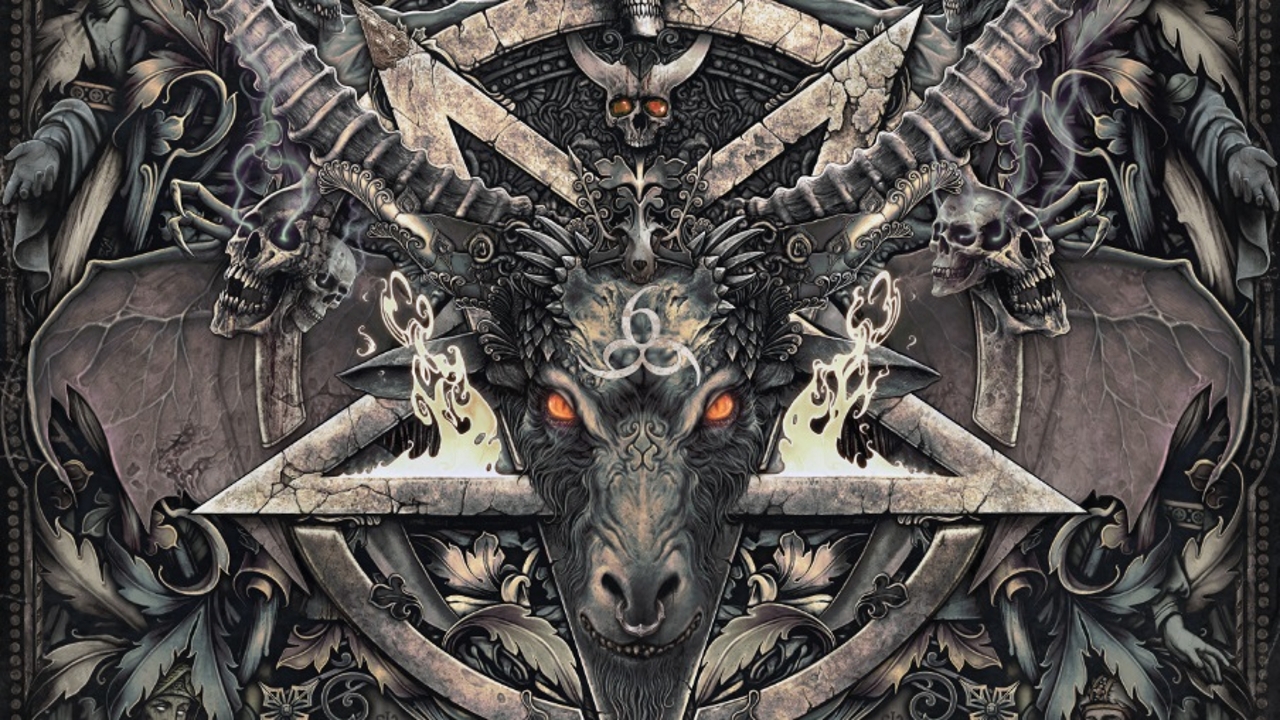
Sigil is an unofficial expansion containing nine new single-player levels and nine new multiplayer maps. It doesn’t count as canon because it’s not owned by Bethesda, but it was made by John Romero, the brain behind the original Doom levels, so it counts as canon in our hearts.
While Sigil introduced new weapons, a new story, and even had the guts to incorporate a Baphomet glitch into its plot, it loses points for not being canon (even though it feels like it is). Therefore, we can’t reasonably place it higher than number 10.
Another really cool thing about Sigil is that you can either get it for free or in a luxuriously cool physical format.
- Strengths: This is the original Doom II gameplay at its freshest. It’s like an unreleased greatest-hits album.
- Weaknesses: More of the same.
- Bonus: And if you’re really into John Romero’s work, you can buy his newest Doom II level, One Humanity. The money will go towards helping the people of Ukraine, the Red Cross, and the UN Central Emergency Response Fund.
9. Doom (1993)
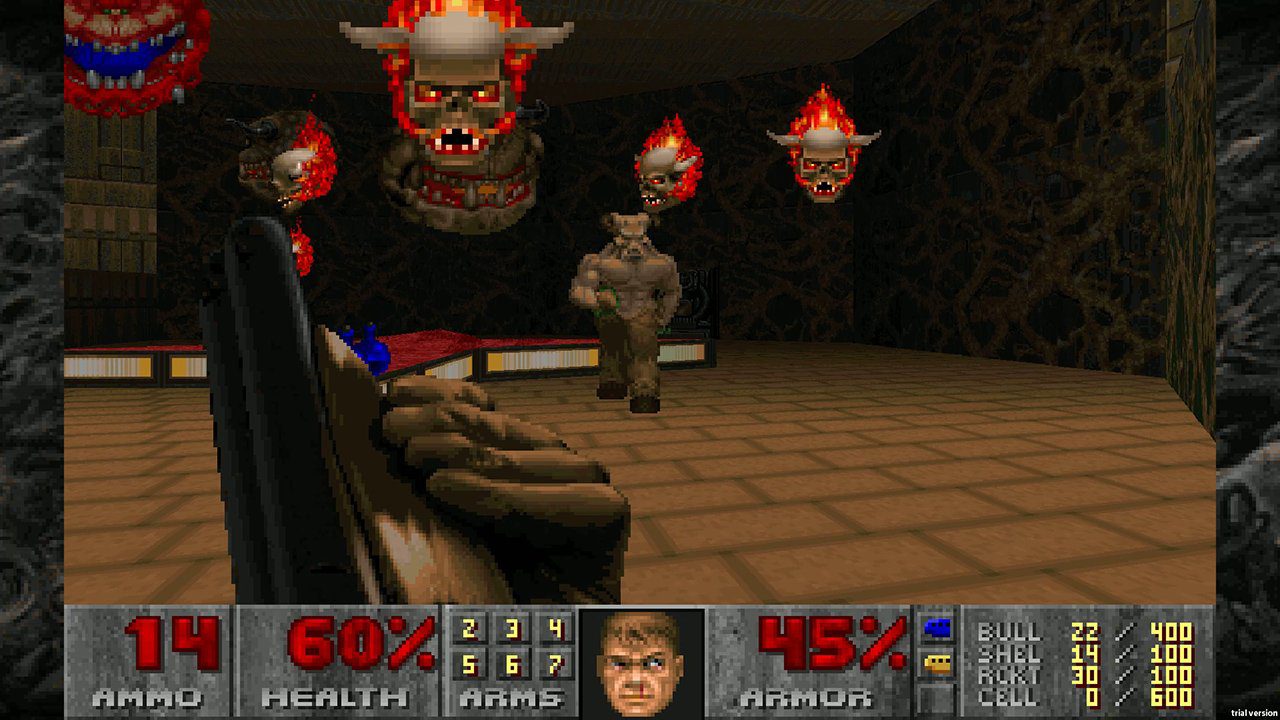
The game that started it all, and a massive nostalgic kick for anyone who was around to witness it. Despite the technical prowess behind it, Doom was simple and efficient. No big plot, just a bunch of beautiful levels where a man faces insurmountable odds while armed solely with an insurmountability-proof arsenal. On top of its single-player campaign, the original Doom also introduced the concept of the Deathmatch, paving the way for online gaming.
Though not technically 3D, Doom deserves credit for one of the most important moments in gaming history, the eventual shifting of most of the industry away from 2D. Did we mention that it was and still is a lot of fun?
Please don’t feel bad that we’re putting it this low. It’s just a statement regarding the series’ continuous evolution.
- Strengths: Though severely dated, it’s still a hell of a lot of fun. Pun intended.
- Weaknesses: It’s over 21 years old and still good. Wait, is that just another strength? Oops.
8. Doom II (1994)
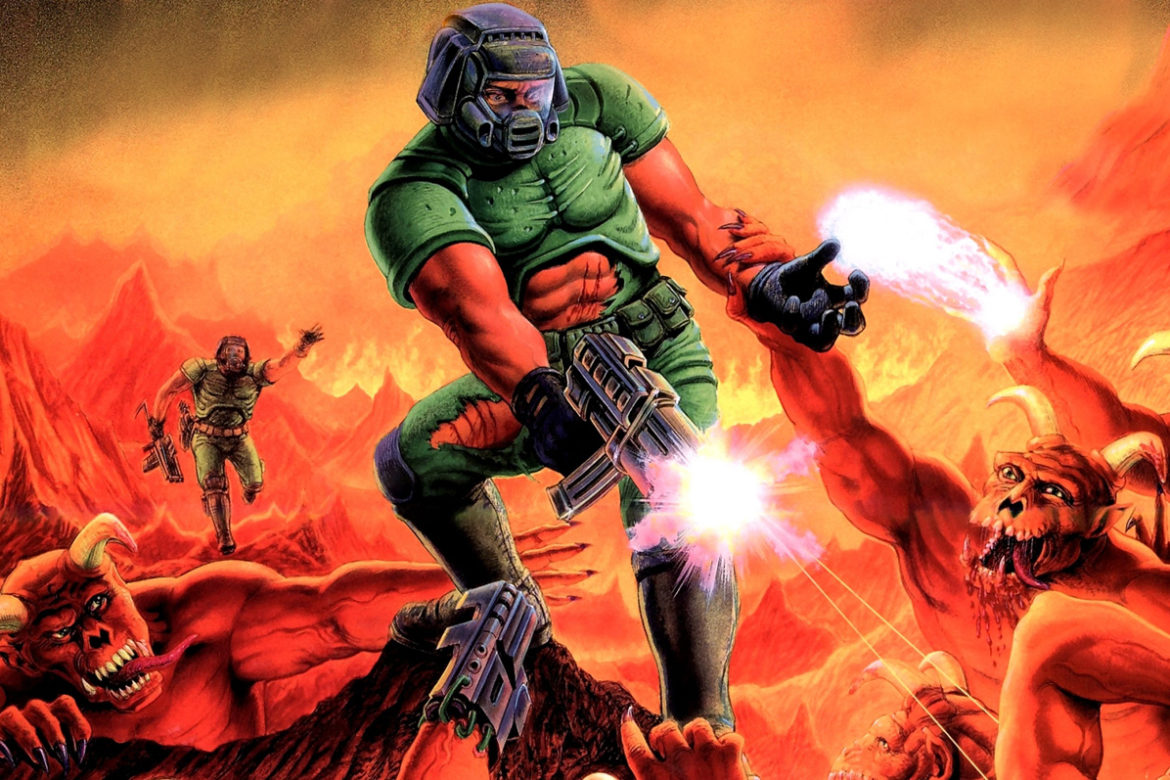
Gaming was very different in the ’90s. You could get away with simply giving the same game new levels and calling it a sequel — and that’s exactly what Doom II is. Why fix what isn’t broken, right?
This simplicity allowed the Doom franchise to stamp its authority on the genre and start to set the pace. While everyone speculated about a sequel to Wolfenstein 3D, the folks at id Software were rolling up their sleeves and getting things done.
Doom II didn’t really revolutionize the world as the first one did, but it sure kept Doom at the top of everyone’s minds.
- Strengths: It has more cool stuff than the original.
- Weaknesses: It’s basically just Doom, but no one’s complaining.
7. Final Doom (1996)
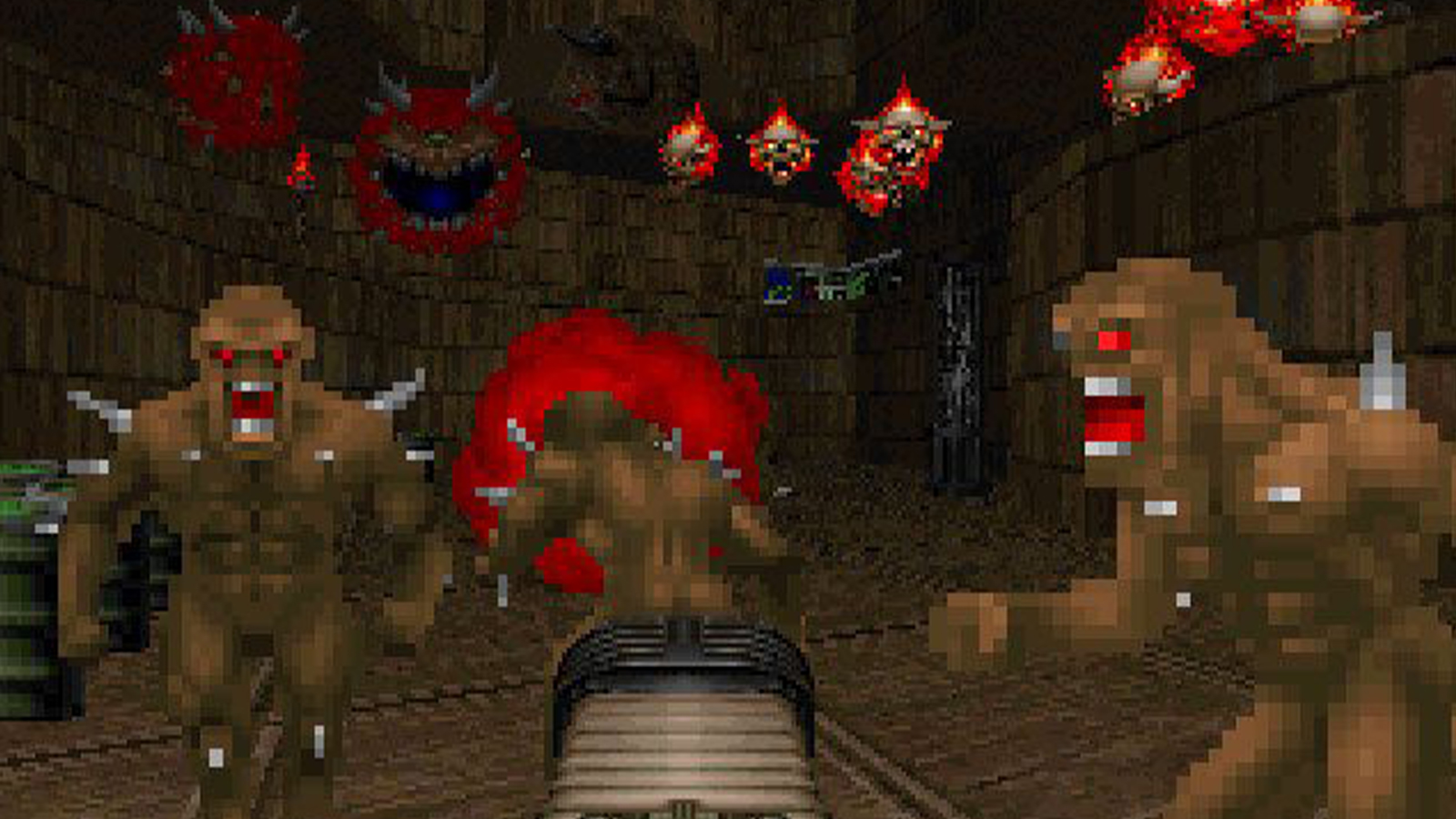
Despite its confusing name, Final Doom isn’t the definitive version of the original Doom. It’s an expansion for Doom II that serves as the culmination of the classic Doom games and feels like a massive treat for fans.
Final Doom adds two new episodes that amount to 32 new levels. It’s great, but remember, this isn’t your classic stroll through Hell. Final Doom is for Doom veterans, so expect difficulty that comes not just from combat but also from more complex levels.
- Strengths: Higher difficulty. This is the perfect culmination for lovers of the two original games.
- Weaknesses: Don’t play it if you think Doom II feels old—or difficult.
6. Doom 64 (1997/2020)
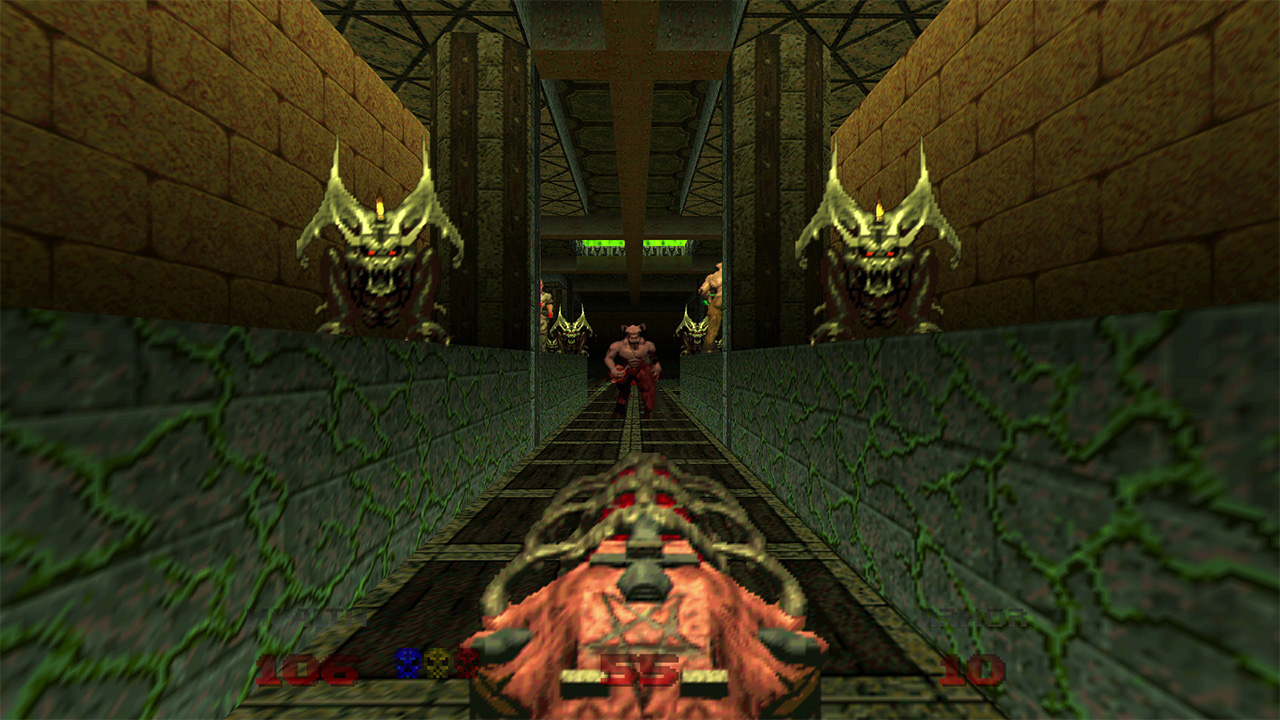
Those who made the strange jump from the PC to the Nintendo 64 back in 1997 found in Doom 64 the graphical improvements that Doom II lacked.
Despite not being an id Software product, Doom 64 is a more than worthy successor to Doom II, a completely new game with a fresh campaign filled with amazing new levels. Anyone interested in this peculiar title will probably enjoy learning that we can finally experience it on PC, PS5, Xbox Series X|S, and Nintendo Switch.
And if learning about the re-release gets you excited, we have even better news. Players who beat the campaign will gain access to something called “Lost Levels,” an awesome new campaign hidden behind the old one. The new campaign rocks on its own but earns extra points by connecting the events of the older Doom games to the reboot from 2016.
Weirdly enough, though, Doom 64 doesn’t feature any multiplayer options.
- Strengths: Provides the graphical evolution that Doom II didn’t.
- Weaknesses: It’s hard to forgive a Nintendo 64 game that doesn’t feature local multiplayer.
5. Doom 3 (2004)
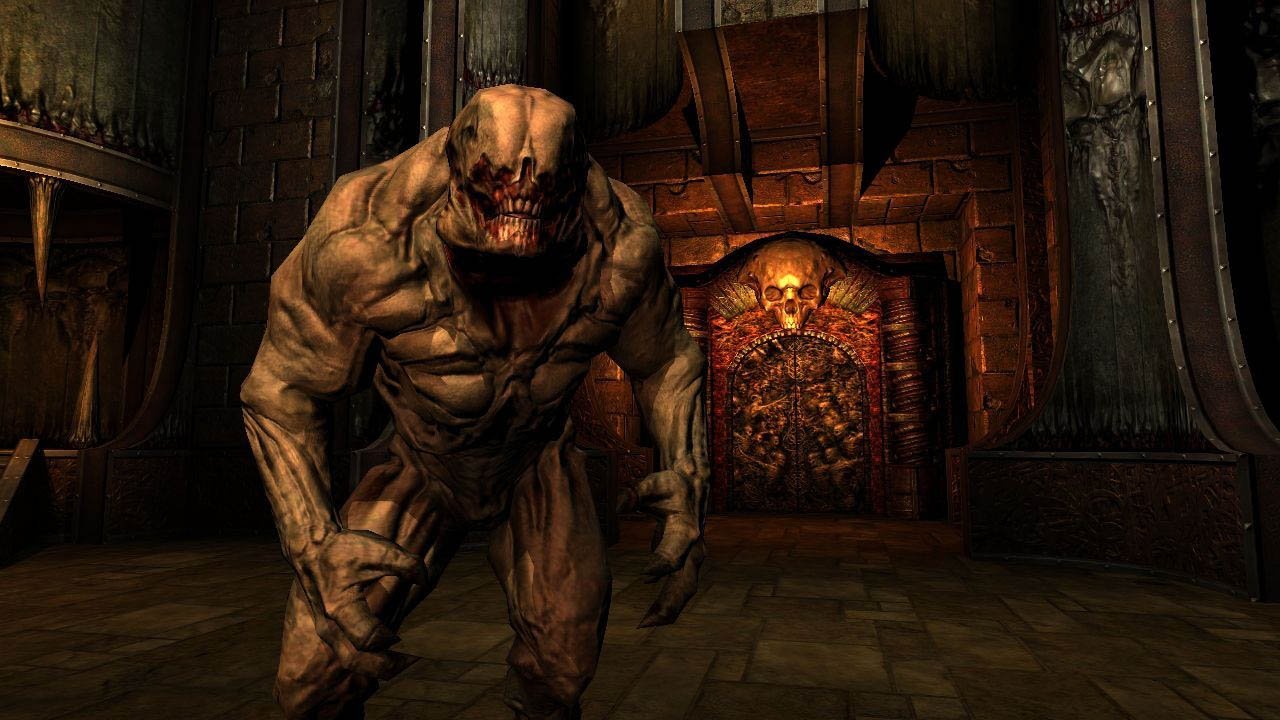
There was some serious hype surrounding Doom 3 back then. It had been a while since we got a brand-new Doom game, and it was well-received, if just a little bit disappointing. Instead of feeling like you, the player, were driving the story forward (as in older Doom titles), it felt more like we were being pulled along the story instead.
Still, we get the sense that Doom 3 gave us exactly what the developers wanted to create, and that was a slower and more intimate descent into Hell. Most don’t give it enough credit in that regard, but Doom 3 not only mastered dark and creepy sci-fi environments. It also mastered the art of jump scares. Nobody ever puts Doom 3 in a “best of” horror games list, but it packed some serious scares back in the day—and it still does.
- Strengths: It features beautiful environments and interesting reimaginings of classic enemies, and it gets scary as hell.
- Weaknesses: Weirdly simplistic gameplay for something that looked so far ahead of its time.
4. Doom 3: Resurrection Of Evil (2005)
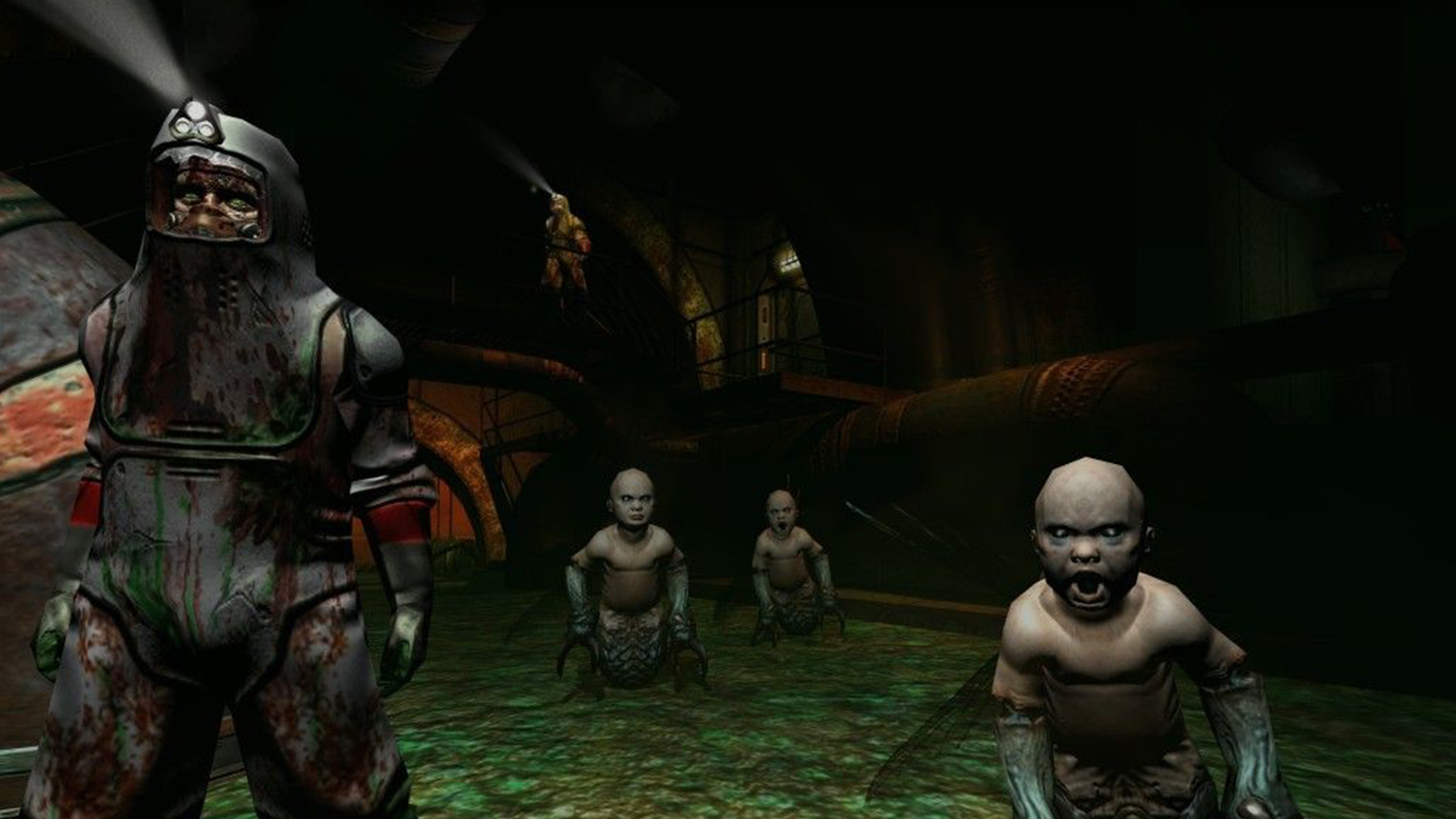
Doom 3’s sole expansion successfully dealt with some of the main game’s weakest aspects. Resurrection Of Evil added a few new weapons and special abilities that spiced up the otherwise conservative original.
The most interesting addition is the grabber, a weapon that allows players to levitate and throw objects at enemies—or to simply fling their projectiles back at them. While these new additions were cool, they didn’t affect the gameplay much.
More cynical minds could accuse Resurrection Of Evil of being no more than an attempt to cash in on the popularity of the gravity gun, but it’s more than that. Resurrection Of Evil offers neat gameplay improvements that result in a nice mini-campaign. Also, ROE had to exist because it provides the closure to the story that Doom 3 lacked.
- Strengths: Shows more of Doom 3’s beautiful hell realm. A new weapon that allows players to control physics.
- Weaknesses: It’s very short. Resurrection Of Evil‘s use of physics pales in comparison to what Valve had achieved with Half-Life 2’s gravity gun.
3. Brutal Doom (2010)
Disclaimer: We know Brutal Doom isn’t an official entry in the series. We also know we would be doing such a mod-friendly series a disservice if we were to ignore its greatest mod. Putting the word Brutal in front of Doom might seem unnecessary, but this mod by Marcos “Sargeant Mark IV” Abenante isn’t kidding around.
Brutal Doom doesn’t just greatly increase the amount of blood and guts seen in the original Doom. It modernizes its entire gunplay without messing up its beautiful surface. It also adds melee combat, glory-kill animations, stealth elements, and headshots. Don’t think this will be a walk in the park, though, as Brutal Doom also makes enemies much faster and more capable.
- Strengths: It brings the gameplay of the original Doom to new heights—and speeds.
- Weaknesses: It mostly looks like the old Doom if you count that as a problem.
2. Doom (2016)
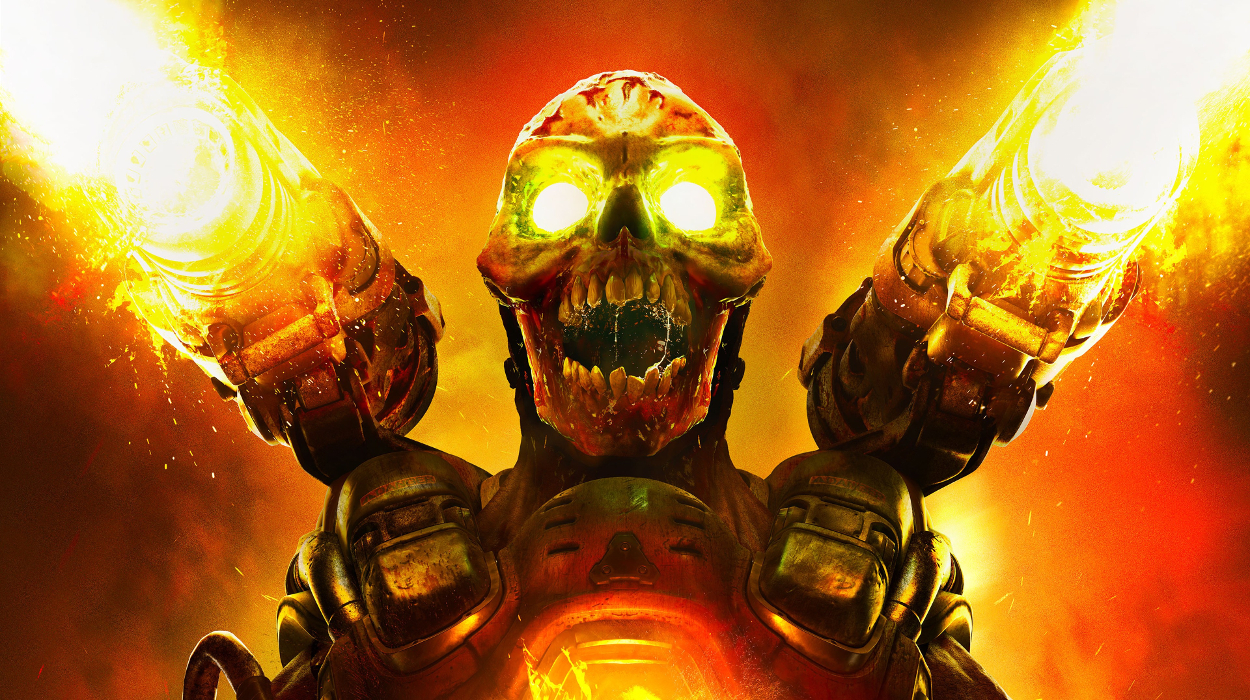
Though Doom 3 hit many of the right beats, it failed to reach the series’ full potential in the eyes of fans. The Doom reboot had a long and arduous development cycle, one that nearly ended with it becoming a Call Of Duty clone. Luckily, cooler heads prevailed, and we ended up getting one of the best reboots of all time.
The reboot did away with the slow pace of Doom 3, and with that alone, created a completely new thing. Doom was no longer about scaring the player. It was now about the player making Hell itself feel afraid. How did the devs do that? By empowering the Doom Slayer in all sorts of marvelous ways, the new Doom is turned into one of the most fast-paced and brutal shooters ever made.
- Strengths: Doom redesigned as a series of ever-harder arenas was an ace move. Aside from the pistol, all the weapons are extremely fun to use. The game looks gorgeous and runs very well on weaker hardware.
- Weaknesses: The first level of the game only gives players access to the basic pistol. That doesn’t do a great job of enticing players for what is to come. We forgive the devs, though, because they give us a Shotgun right at the start of…
1. Doom Eternal (2020)
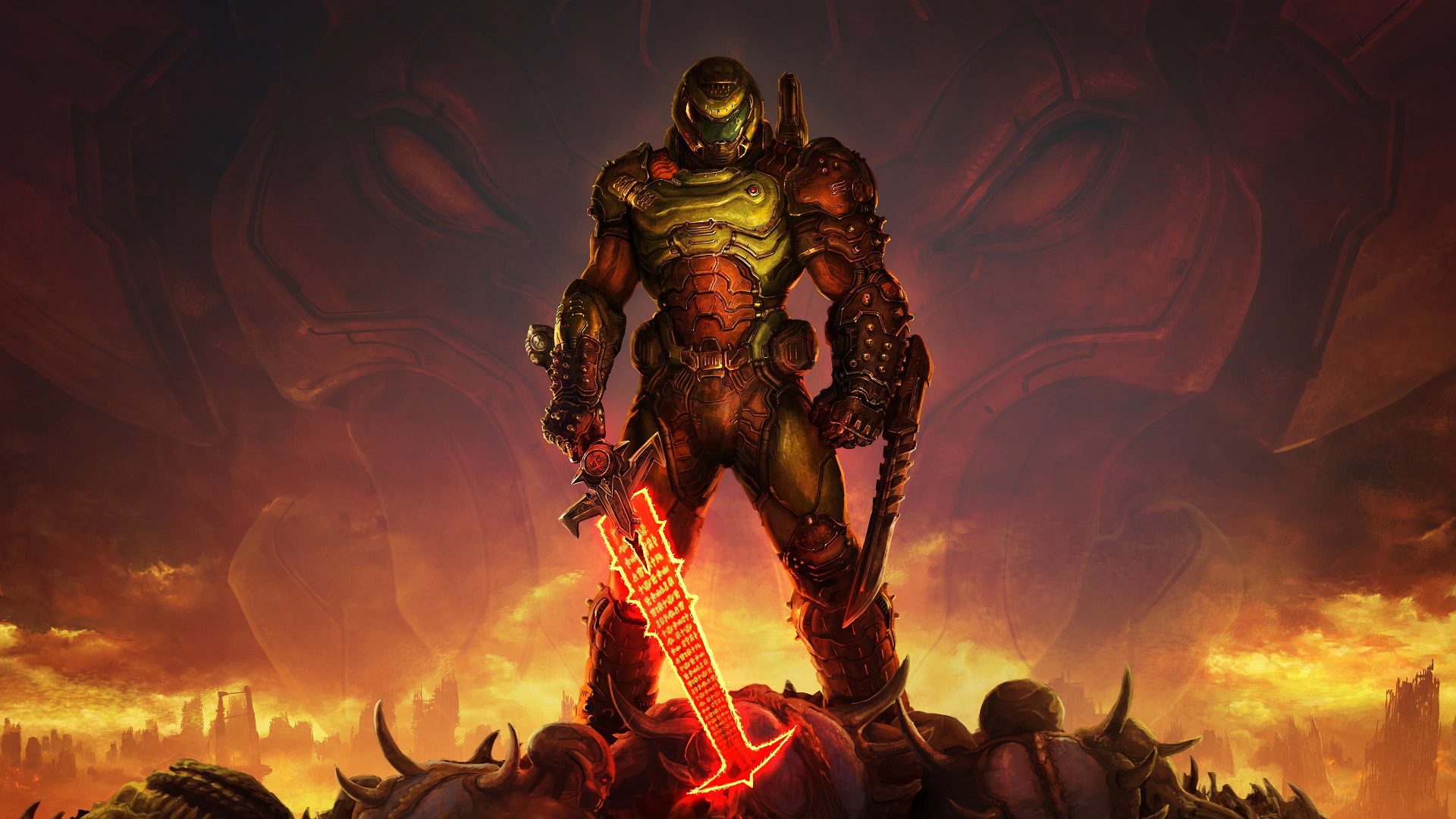
We’re not going to hold it against anyone who puts the Doom reboot above Doom Eternal. It comes down to a matter of preference. Gameplay or plot? The reboot features a better plot in the sense the developers understood nobody cares about the plot in these games, so there mostly isn’t one. In the reboot, the Doom Slayer actively disregards learning about important story elements, whereas Doom Eternal makes him fully invested in what’s happening, down to giving him a backstory. We’re not thrilled about that, especially after Doom nailed the character so well.
Despite the shortcomings of the fairly bland plot, the gameplay was brilliant. We got a hook, a shoulder cannon, a dash, an insta-kill sword, and a new replenishment system that made the game feel more hectic than ever before.
Also, who could forget the Marauder, an enemy in a Doom game that requires players to actually think? The Marauder rocks, not just because it’s the most interesting enemy in the history of Doom but because it might pave the way for sequels filled with way more challenging enemies. Doom might never beat the Half-Life series in terms of level design or puzzle ingenuity, but it could further surpass its rivals in its approach to combat.
Finally, we also got two expansions that gave us more enemies, more story, but most importantly, more reason to keep playing one of the most fun Doom games ever made.
- Strengths: The most refined and hectic gameplay in the entire series. The most fun arsenal and the best enemies to use it on. One of the enemies, the Marauder, provides the most fun challenge we’ve ever seen in the series. Absolutely glorious soundtrack.
- Weaknesses: One of the few instances in which a bigger emphasis on plot and backstory doesn’t pay off. A sad mistake after they aced the approach to the plot in Doom (2016).
